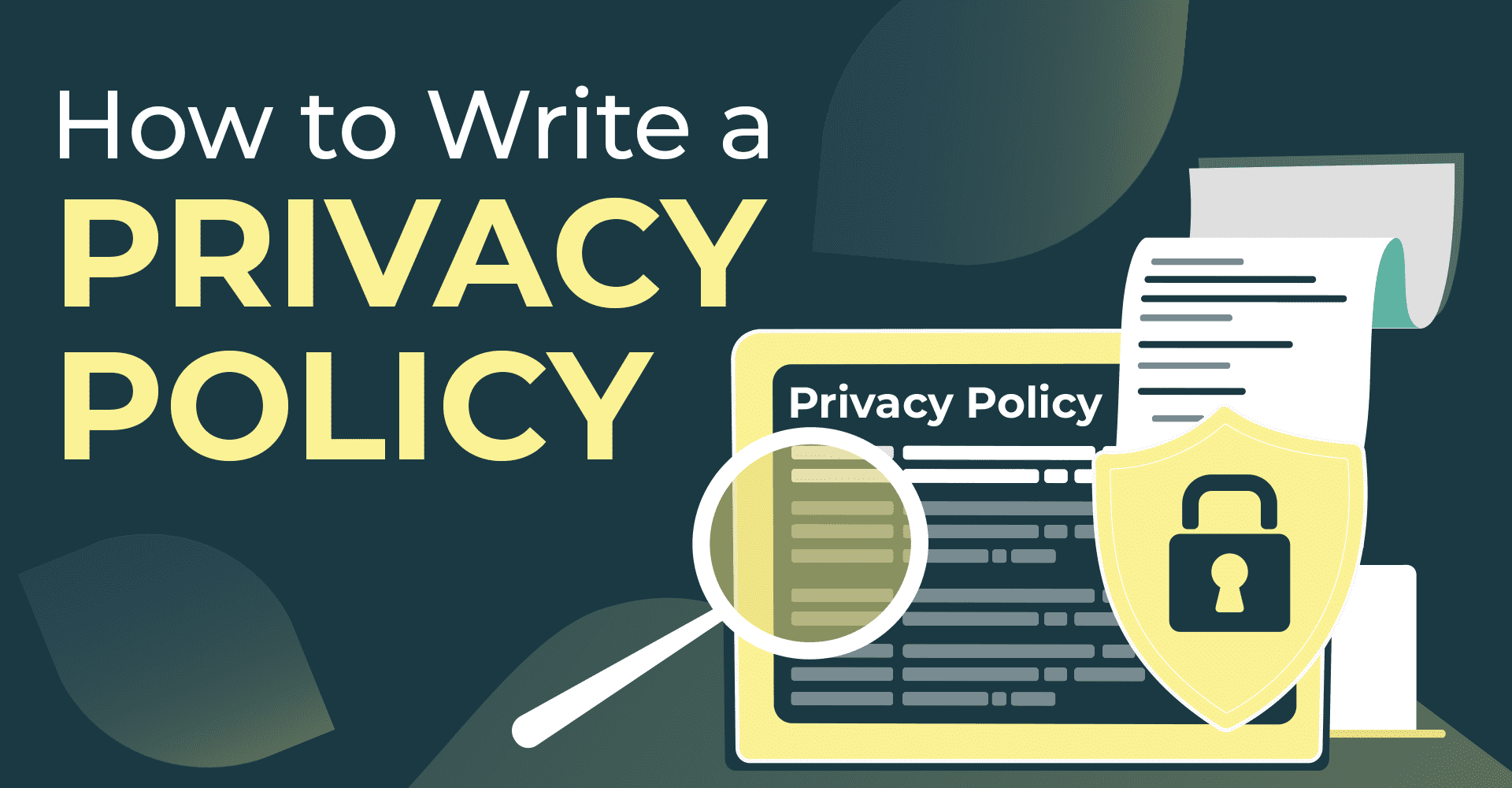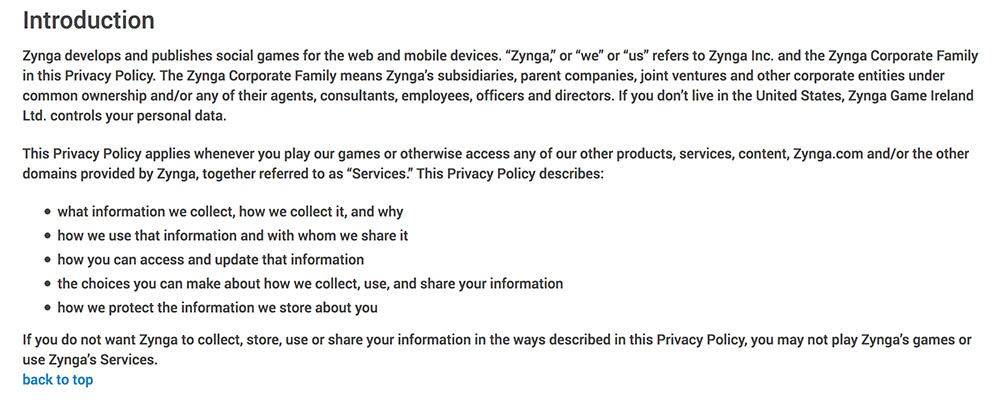How to Write a Privacy Policy for Your Website: A Step-by-Step Guide
Writing a privacy policy for your website is crucial. It protects your users’ data and builds trust.
Creating a privacy policy might seem daunting. But it’s essential for any website. A well-crafted privacy policy outlines how you collect, use, and protect user data. This legal document not only keeps you compliant with regulations but also reassures your visitors.
By transparently sharing your data practices, you show respect for user privacy. In this guide, we’ll walk you through the steps to write an effective privacy policy. You’ll learn what key elements to include and how to present the information clearly. Let’s dive into the details and ensure your website stays trustworthy and compliant.

Introduction To Privacy Policies
Every website needs a privacy policy. This document tells users how their data is collected and used. It builds trust and shows transparency.
Importance Of Privacy Policies
Privacy policies are crucial for any website. They inform users about the types of data collected. Users learn how their data is used and stored. This transparency builds trust.
Without a privacy policy, users may feel insecure. They might avoid sharing their information. This can hurt your website’s growth.
Legal Requirements
Many countries have laws about privacy policies. For example, the General Data Protection Regulation (GDPR) in Europe. The California Consumer Privacy Act (CCPA) in the USA. These laws require websites to have a privacy policy.
The privacy policy must be clear and easy to understand. It should list what data is collected and why. It should also explain how data is protected.
Here is a simple table showing some legal requirements:
| Country/Region | Law | Requirement |
|---|---|---|
| Europe | GDPR | Privacy Policy |
| USA | CCPA | Privacy Policy |
Follow these laws to avoid fines and penalties. Stay updated on legal requirements. They can change and affect your website.
Identifying Data Collected
One of the first steps in creating a privacy policy is identifying the data collected from your website users. This section provides an overview of the types of data you may collect and the methods you use to collect it. Being clear about this helps build trust with your users and ensures compliance with data protection laws.
Types Of Data
There are various types of data that websites collect. Here are some common categories:
- Personal Information: Names, email addresses, phone numbers, and physical addresses.
- Financial Information: Credit card numbers, bank account details, and payment history.
- Technical Information: IP addresses, browser type, and device information.
- Usage Data: Pages visited, time spent on the site, and links clicked.
Methods Of Collection
Understanding how you collect data is crucial. This helps in explaining the process transparently to your users.
| Method | Description |
|---|---|
| Forms | Users fill in their details via registration or contact forms. |
| Cookies | Small files stored on user devices to track site interactions. |
| Analytics Tools | Software that collects data on user behavior and site performance. |
| Surveys | Questionnaires that gather user opinions and preferences. |
By detailing these methods, you help users understand how their data is collected. This can lead to greater transparency and trust.
Explaining Data Usage
When creating a privacy policy for your website, explaining data usage is essential. Users need to know how their data is used and why. This builds trust and transparency. Below, we discuss the purpose of data use and sharing with third parties.
Purpose Of Data Use
Clearly state the reasons for collecting data. Common purposes include:
- Improving user experience: Personalize content and recommendations.
- Communications: Send updates, newsletters, or promotions.
- Analytics: Understand user behavior to enhance services.
- Security: Protect against fraud and abuse.
Provide specific examples of how data is used. For instance:
| Data Type | Purpose |
|---|---|
| Email Address | Send newsletters and updates. |
| IP Address | Monitor for suspicious activity. |
| Browsing History | Recommend relevant content. |
Sharing With Third Parties
Detail if and when data is shared with third parties. Users should know:
- Service Providers: Explain if you work with third-party services. For example, email marketing platforms or payment processors.
- Legal Obligations: State if data is shared to comply with laws or regulations.
- Business Transfers: Mention if data is transferred during mergers or acquisitions.
Specify the safeguards in place to protect shared data. This can include:
- Encryption
- Confidentiality agreements
- Regular security audits
Transparency about data sharing helps build user trust. It’s crucial to explain all points clearly and simply.
Detailing Data Storage And Security
When creating a privacy policy, detailing data storage and security is crucial. Your visitors need to know where their data is stored and how it is protected. This builds trust and ensures transparency. Below, we break down the key elements of data storage and security.
Storage Locations
Inform your users where their data is stored. This can include servers, databases, or third-party services. Use a table to clarify this:
| Data Type | Storage Location |
|---|---|
| Personal Information | Internal Servers |
| Payment Details | Third-Party Payment Processor |
| Usage Data | Cloud Storage |
Security Measures
Outline the security measures in place to protect the data. These can include encryption, firewalls, and regular security audits. Consider using a bullet-point list for clarity:
- Encryption: Data is encrypted during transmission and storage.
- Firewalls: We use firewalls to block unauthorized access.
- Security Audits: Regular audits are conducted to ensure compliance.
- Access Control: Only authorized personnel can access sensitive data.
By detailing data storage and security in your privacy policy, you reassure users of their data’s safety. This section is vital for building trust and transparency.
User Rights And Choices
Creating a privacy policy is essential for any website. It’s important to address user rights and choices clearly. This section helps users understand their rights and the choices available to them. It builds trust and shows that you respect their privacy. Let’s explore the key elements of user rights and choices.
Accessing Personal Data
Users should know how to access their personal data. Make this process simple and straightforward. Explain how they can request access to their data. Provide clear instructions on whom to contact. Ensure they know what information they can access. This transparency is crucial for building trust.
Opt-out Options
Users may want to opt out of certain data practices. Offer easy-to-understand opt-out options. Clearly explain how users can opt out. This could include stopping certain emails or data sharing. Provide simple steps they can follow. Ensuring users have control over their data is key. It shows you value their privacy and preferences.
Cookie Policy Inclusion
Including a Cookie Policy in your Privacy Policy is essential. It informs users about the cookies your website uses. This transparency builds trust and ensures compliance with legal requirements.
What Are Cookies?
Cookies are small text files stored on a user’s device. They collect information about browsing habits.
They help websites remember user preferences and improve user experience. Without cookies, websites may not function as intended.
| Type of Cookie | Description |
|---|---|
| Session Cookies | Temporary cookies that expire when the browser is closed. |
| Persistent Cookies | Cookies that remain on the device until manually deleted or expired. |
| Third-Party Cookies | Cookies set by external services, e.g., analytics tools. |
How Cookies Are Used
Websites use cookies for various purposes. Here are common uses:
- Essential Cookies: Necessary for website functionality.
- Performance Cookies: Collect data on how users interact with the site.
- Functionality Cookies: Remember user preferences and settings.
- Advertising Cookies: Track user activities for targeted ads.
It’s crucial to inform users how you use cookies. This can be done through a clear and concise Cookie Policy section.
Here is an example:
Our Use of Cookies
We use cookies to improve your experience on our website. By continuing to browse, you consent to our use of cookies as described in this Cookie Policy.
- To remember your preferences.
- To analyze site traffic.
- To provide targeted advertisements.
Ensure you provide users with options to manage cookies. This can include opting out or adjusting browser settings.
Drafting The Privacy Policy
Creating a privacy policy for your website ensures users know how their data is collected, used, and protected. Clearly outline data practices, including information gathering, storage, and sharing policies. Make sure the language is simple and transparent.
Writing a privacy policy can seem overwhelming. But it is crucial for your website. A clear and well-structured privacy policy builds trust. It tells users how you collect and use their data. Here are some tips to draft an effective privacy policy.Using Clear Language
Use simple and clear language. Avoid legal jargon. Your visitors should understand your policy easily. Explain data practices plainly. Users should know what personal data you collect. Tell them why you need this data. State how you will use it. Make sure to cover all essential points.Structuring The Document
Structure your privacy policy in an organized way. Start with an introduction. Explain the purpose of the policy. Follow with sections on data collection, use, and sharing. Each section should have a clear heading. Use bullet points for easy reading. End with contact information. Let users know how to reach you for privacy concerns. A well-drafted privacy policy helps protect your business. It ensures transparency with your users. A clear, structured policy can enhance trust and user experience. “`
Reviewing And Updating
Reviewing and updating your privacy policy is crucial. It ensures your website complies with current laws. It also keeps your users informed about their data rights. This is not a one-time task. Regular reviews and timely updates are essential.
Regular Reviews
Privacy laws change often. Your business practices may change too. Regular reviews of your privacy policy help you stay compliant. Set a reminder to review it every six months. This will ensure you catch any necessary updates.
During each review, check for any changes in data collection. Look for new ways you handle user data. Ensure these are reflected in your policy. Also, review user feedback. It can provide insights into areas needing clarity.
Notifying Users Of Changes
Transparency builds trust. Always notify users of any changes to your privacy policy. Use clear, simple language. This helps users understand the changes easily. You can notify them via email. Or, post a notice on your website.
Provide a summary of the changes. This helps users see what is different at a glance. Make sure the updated policy is easy to find. Place a link to it on your homepage. Users appreciate knowing their data is handled responsibly.

Frequently Asked Questions
What Is A Privacy Policy?
A privacy policy is a document that explains how a website collects, uses, and protects user data.
Why Do I Need A Privacy Policy?
You need a privacy policy to comply with legal requirements and to build trust with your website visitors.
What Should A Privacy Policy Include?
A privacy policy should include information on data collection, usage, storage, protection, and user rights.
How Often Should I Update My Privacy Policy?
You should update your privacy policy whenever there are changes in data practices or regulations.
Conclusion
Writing a privacy policy protects your users and builds trust. Clear language is crucial. Always keep it simple and transparent. Regularly update your privacy policy to stay compliant. Be honest about data collection practices. Users appreciate transparency. Now, you have the basics to create an effective privacy policy.
Implement these tips to ensure user trust and legal compliance. Happy writing!






